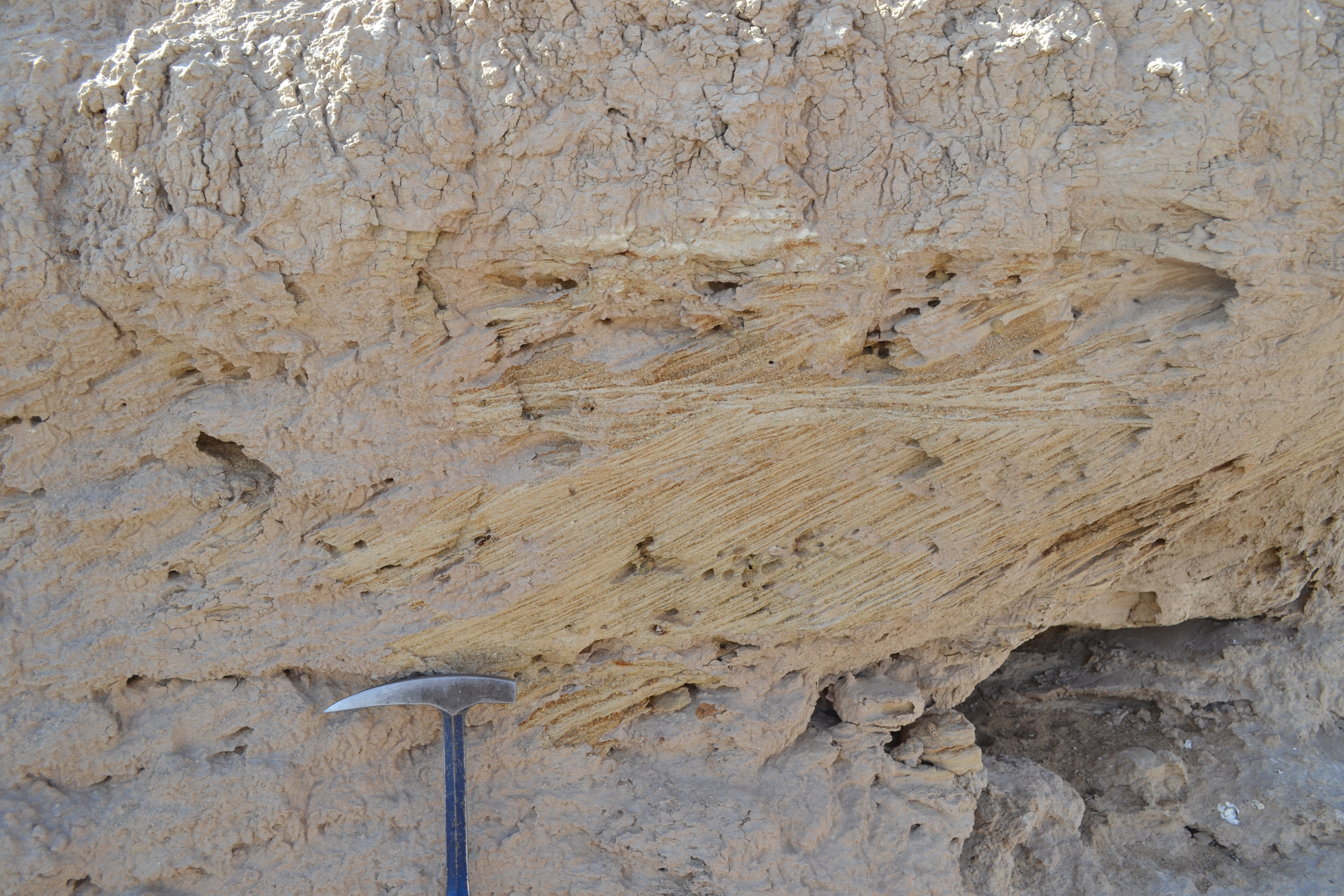Dr Ryan T. Tucker and postgraduate student Jesse van Niekerk recently returned from an eight-week-long field trip to the East Gobi Basin in Mongolia to collect data on the worldwide impact of global warming during the Cretaceous, 125 to 83 million years ago.
Tucker, a sedimentologist in the Department of Earth Sciences at Stellenbosch University (SU), is part of an international team of researchers following a large-scale and multidisciplinary approach to reconstruct paleoclimate trends in eastern Asia. Funded by National Geographic, the objective is to understand climate change on a hemispheric scale.
Van Niekerk's participation in the field trip was made possible with financial support from Freddie Kruger, owner of My Brew Coffee Roastery in the Neelsie Student Centre. This is the third time that Kruger has supported a postgraduate student in the Department of Earth Sciences to participate in an international expedition of this nature.
“Apart from the fact that the earth science lecturers seem to need a lot of coffee to keep going," Kruger says, “I like to be involved and give back to the community in this way". The team was even supplied with a generous amount of My Brew coffee beans and mugs to enjoy in the field.
More about the research
Dr Tucker explains that the mid-Cretaceous was a period in earth's history marked by major environmental and climate disruptions, similar to what we are facing today. This includes a rapid period of global warming attributable to increased atmospheric carbon dioxide emissions, sea-level rise, habitat fragmentation, de-oxygenation of the oceans, and shifting biomes. At this point, Earth entered a period of warming so severe that temperate rainforests flourished at the South Pole.

During this planet wide temperature spike in Earth's history, some species went extinct while other species rapidly diversified, fundamentally altering the structure and composition of land and water ecosystems.
While the impact of these events on the North American continent have been well documented over the past century, scientists are unsure whether the effects they observed in North America can confidently be extrapolated as global trends. This is where Mongolia enters, as it contains one of the richest records of Cretaceous sediments and fossils in the world.
Dr Tucker explains it is like playing Sherlock Holmes, only this time the clues have been left out in the open for millions of years. That is why, the moment they arrive at a new location, the team first observes the site carefully, often making drawings with detailed notes before collecting samples, much like modern forensic teams.
“As geologists, we are knowledgeable about modern environments, so we know where to look for signs of rivers, lakes, desserts, or oceans. In this sense, the rocks and sediments are like physical and chemical fingerprints on which environmental changes have been imprinted over millions of years," he explains.
For his MSc research, Jesse specifically looked for signs of rivers, soils, lakes, landslides, and flood plains that have been left behind in the rock record. The signs and sediment patterns he observed in the field will allow him to determine exactly which types of rivers were present and even the direction in which they flowed and interacted with the surrounding ecosystem.

“The features that I observed from these ancient soils will allow me to determine climatic conditions such as whether this period was dry, wet, or humid and whether plant life thrived. I also collected rock samples that will be used for chemical and microscopic analysis to support my field observations," he explains.
Jesse's research will ultimately enable him to produce a complete reconstruction of what the environment might have looked like during this period in Mongolia and how it has been altered over time.
According to Tucker, Jesse displayed an exceptional ability in the field to “see" tectonic folding and faulting: “In this part of the world, the rock formations are highly deformed, and it is no easy task to figure out what happened millions of years ago. In Jesse's case, even my collaborators from the United States commented on his ability to read the rock record".
During the eight-week-long field trip, they travelled in several 4X4 multi-purpose all terrain KAMAZ (troop carriers) and several Land Rovers, as roads outside the capital city of Ulaanbaatar and other towns are limited to two-tracks or lacking altogether. After eight weeks of living in tents with little to no access to ablution, they literally work a day or two into their schedule to clean up and shave before returning to South Africa.
While this was Jesse's first trip outside of South Africa, it is certainly not the last: “I really enjoyed tasting foods from different cultures – Korean, Japanese, Chinese and Mongolian – and I even learned a few Mongolian phrases. It was also amazing to see the large groups of wild horses and camels roaming the grass lands, and how nomadic groups make a living out there".

